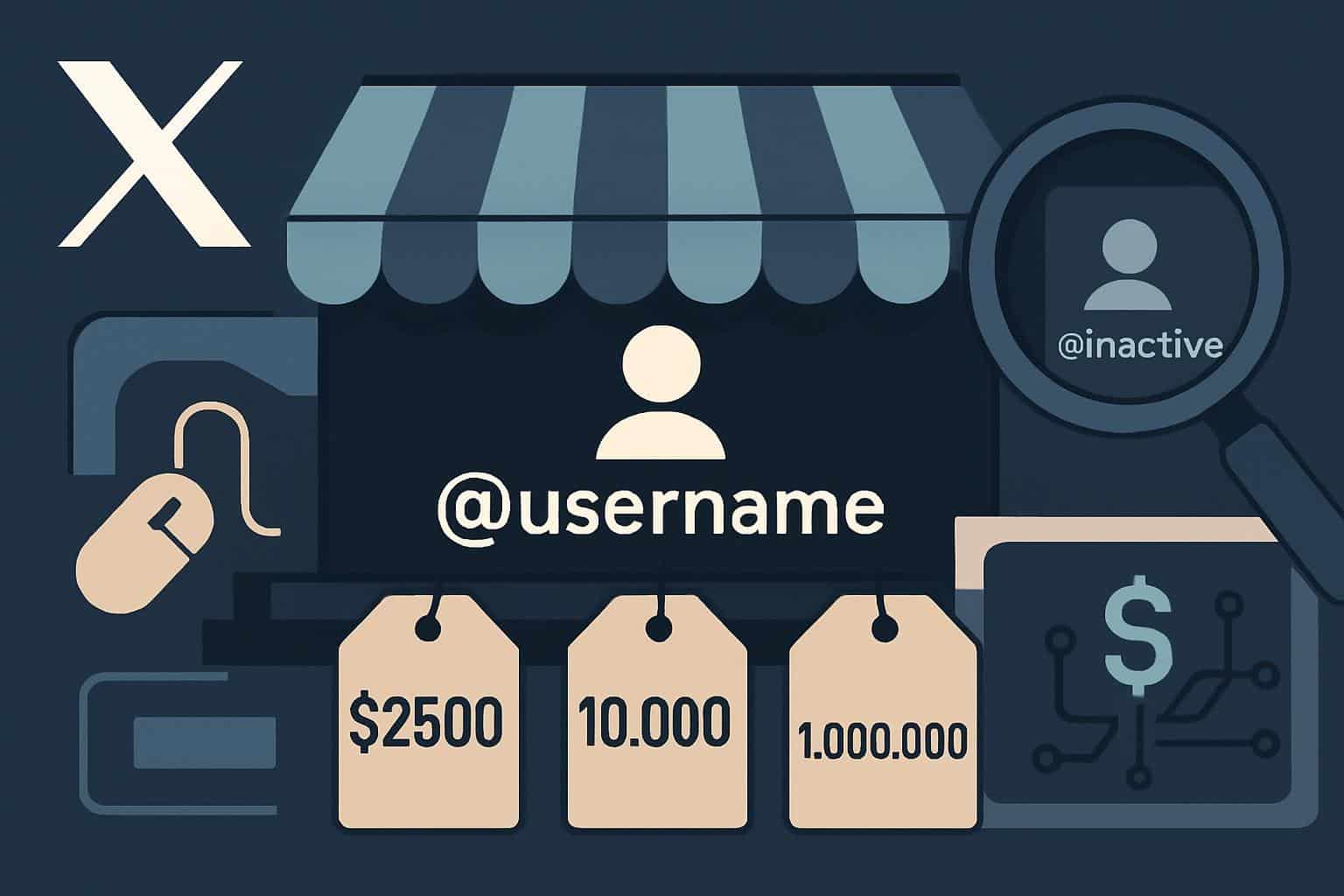X is getting ready to open a new Handle Marketplace, where paid subscribers can pick up inactive usernames — along with an “elite” class of premium-length short or culturally descriptive handles that can be $2,500 or much more. The most expensive names might be seven figures, the company says, staking user IDs as rare digital assets for brands, public figures, and collectors.
How the Handle Marketplace Works for Subscribers
The market is open to Premium+ and Premium Business subscribers, who can find dormant usernames and file requests. X is currently splitting reclaimed handles into two buckets: Priority and Rare. Priority handles — which can be full names, multiword phrases, or alphanumeric strings — may potentially also be accessible without an additional payment on top of the subscription fee, subject to approval.

Rare handles are the short, unbranded, or high-status names that carry weight: the single-word ones and the initialed, so invaluable in their authority as if one were speaking for an august institution. There are public drops, in which a number of applicants vie at once, and invite-only direct purchases. In public drops, allocation should take into account prior contributions on X, intended usage, and reach.
Once a new handle is assigned, the account’s former username will freeze to deter flipping or impersonation. X also says that any handles claimed on the marketplace cannot be transferred. If a subscriber later downgrades or cancels, the claimed handle is released after a 30-day grace period.
Pricing and Eligibility for Rare and Priority Handles
X notes that prices for Rare handles start at $2,500 and can reach over seven figures depending on length, popularity, and cultural meaning.
Think about short handles that have outsized visibility — those an artist, a politician, or a global brand might like to call its own.
Access is restricted to higher-tier subscribers: Premium+ runs $40 per month and Premium Business begins at around $50 per month. Both can be waitlisted for the marketplace. But for businesses considering costs, a total outlay might amount to a one-time handle fee plus a subscription (and an obvious nod to the “recurring” part of recurring revenue).
Why These Usernames Sell for a High Price
Easy-to-remember short usernames are the equivalent of prime beachfront real estate. It’s a function of scarcity, discoverability, and social proof. Marketing teams value handles that form a perfect match with the brand name; creators and public figures get single-word or initial-based identifiers that are easy to remember — and hard to replicate. It’s the rarity and utility combination that determines price more than any technical cost.

There’s also a history of underground markets for so-called OG handles — short names that have been snatched up or traded. SIM-swapping and social engineering attacks on all the major platforms have been well documented by security researchers and journalists, from reporting featured by Krebs on Security to journalist doxxing. By codifying a channel and locking up old names, X is signaling that it wants to limit gray-market trading and impersonation risks.
Brand Safety and Legal Tensions Around Handles
The move will be a test of how X enforces trademark and impersonation policies. Though marketplace vetting and non-transferability ought to minimize squatting, conflicts will erupt when a dormant handle syncs up with an active brand or public office. Groups like the World Intellectual Property Organization have processes in place for domain disputes, but social usernames exist in a murkier, platform-directed realm where policy matters more than case law.
The company’s systems for verification and labeling will also come under the spotlight. Clarity improves for a brand when it manages to land a corresponding Rare handle. Rather, if a third party gets hold of such a high-profile generic term, X faces demands for strong labeling and blocking to make sure consumers are not confused — a perennial issue also raised by consumer protection authorities such as the Federal Trade Commission when it discusses risks posed by online impersonation more generally.
Revenue Strategy and Cleanup of Inactive Accounts
The marketplace dovetails with X’s larger effort to monetize beyond advertising through subscriptions and add-ons. Industry analysts at firms like Insider Intelligence have reported volatility in the platform’s ad business, leading to experiments with paid features. The Information previously reported that the company had begun searching for a way to sell off dormant usernames as early as 2023, with some names said to have sold for tens of thousands of dollars in private deals.
Additionally, it appears that selling inactive handles follows up on leadership’s stated goals to trim old accounts and recycle unused identifiers. For regular people, the upside is a chance at landing a pristine, on-brand handle. For X, it’s a way to turn decades-old inventory into cash while also cleaning up the namespace.
What to Watch Next as X Opens Handle Marketplace
But questions remain: how transparent pricing will be for direct purchases, what possibilities exist for appeal of contested names, how quickly reviews are completed, and where the company can draw the line when selling high-dollar handles in public-interest categories tied to civic entities. If those seven-figure prices become reality, you can expect scrutiny from user advocates and brand owners alike.
For now, potential purchasers can sign up for Premium+ or Premium Business, get on the waiting list, and create a strong case for planned use. Frozen old handles and nontransferability be damned, the market could encourage username trading into a more regulated, if costlier, era.

